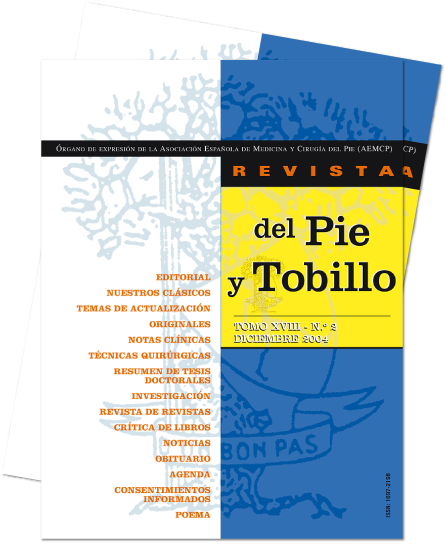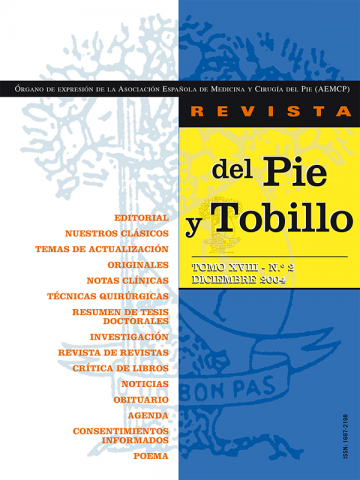Resumen:
El astrágalo es un hueso con características peculiares que hacen que los traumatismos sobre el mismo puedan provocar graves consecuencias en el pie.
Las fracturas de astrágalo son lesiones raras. Representan el 0,4% de las fracturas del cuerpo humano. Por su frecuencia, ocupan el segundo lugar dentro de las lesiones óseas tarsianas. Aunque no representan un número importante en sentido absoluto, tienen gran significación pronóstica y social a causa de las importantes secuelas funcionales que pueden originar.
Se realiza una revisión de 29 pacientes con un total de 31 fracturas de astrágalo tratadas en el Hospital ASEPEYO de Sant Cugat entre los años 1997 y 2003. En 23 de ellas se ha realizado tratamiento quirúrgico mediante osteosíntesis, y en 8, tratamiento ortopédico. Se analiza la edad, sexo, mecanismo, el tipo de fractura, el tratamiento realizado y la evolución seguida.
Se realiza una valoración de los resultados teniendo en cuenta la escala de la AOFAS de las lesiones del retropié, obteniendo unos resultados aceptables para el paciente del medio laboral, en los que es muy complejo realizar una valoración final.
Creemos que un buen resultado precisa de una correcta valoración preoperatoria, así como un tratamiento precoz en muchos casos nos permite realizar una mejor reducción y ayudará a conseguir una disminución de las complicaciones, entre las cuales se han presentado cuatro necrosis óseas y una amputación del pie.
Abstract:
The talus is a bone with particular characteristics; for this reason, trauma to the talus may have severe consequences on the foot.
Fractures of the talus are infrequent lesions. They represent 0.4% of all bone fractures in the human body. However, they are second in frequence among tarsal bone lesions. Although their number is not large in absolute terms, they have considerable prognostic and social significance because of the important functional sequelae they may have.
We have reviewed 29 patients with a total of 31 fractures of the talus treated at the Sant Cugat Asepeyo Hospital between 1997 and 2003. Twenty-three fractures were managed surgically with osteosynthesis, and eight were managed orthopaedically. The age and gender of the patients, mechanism and type of fracture, therapy and course were analysed.
The results were assessed using the AOFAS rating scale for hindfoot lesions; the results achieved were acceptable for patients in the labour environment, in whon performing a final assessment is difficult.
We consider that achieving good results requires a correct pre-surgical evaluation. Early management will in many cases allow for a better reduction of the fracture and help achieving a reduction of complications, among which two cases of bone necrosis and one of foot amputation were recorded.





